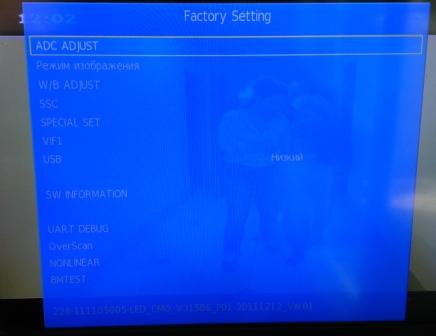Proshivka Aiwa 32le6020
Aiwa F810 cassette deck Aiwa ( アイワ), is a company. Since 2015, American brand rights are owned by -based.
Here you can download the firmware to the AIWA 32LE7011 along with instructions and installation manual. Aiwa (アイワ), is a consumer electronics company. Since 2015, American brand rights are owned by Chicago -based Joe Born. In 2017, Towada Audio began to manufacture Aiwa-branded products.
In 2017, began to manufacture Aiwa-branded products. Aiwa was originally founded in 1951, and was once a globally well-regarded brand known for making quality audio products, such as speakers, and systems. It was the market leader in several product categories. Aiwa created the first Japanese cassette tape recorder in 1964.
The company was listed on the from October 1961 until September 2002. The company went into the red in the late 1990s, and was fully bought by in 2002. Aiwa was then rebranded as a new youth-focused division of Sony, but it was unsuccessful and the brand was discontinued by 2006. In 2015, an American audio company known as Hale Devices, Inc. Was granted the rights to the brand name, with the company renaming itself to Aiwa Corporation and starting to produce audio equipment.
AIWA logo, 1959-1991 The company was founded on June 20, 1951 as AIKO Denki Sangyo Co., Ltd., manufacturing, and changed its name to Aiwa Co., Ltd. ( アイワ株式会社) in March 10, 1959. Mitsuo Ikejiri served as president until 1969. The company was a leading manufacturer of audio products, including headphone stereos, minicomponent stereo systems, portable stereo systems, minidisc players, CD and cassette players, and car stereo systems throughout the 1970s, 1980s, and 1990s. Nearly 86 percent of company revenues were derived from such audio products. 12 percent came from products such as televisions and VCRs, and the remaining two percent from computer peripherals and other life products. Aiwa marketed Japan's first boombox, the TPR-101 in 1968, as well as the first cassette deck, TP-1009. 
In 1980, Aiwa created the world's first personal stereo recorder, TP-S30. Despite Sony being the major shareholder, healthy competition between the two brands was believed to be profitable. In 1990, Aiwa created the HP-J7, designed to be vertically inserted into the ear. In 1993, the first -compatible portable CD player was made, the XP-80G. Apart from audio products, Aiwa also has been present in other industries. The company also made and sold video products, such as VCRs, color televisions, DVD players, and digital satellite television tuners.
Aiwa was also involved in the production of computer peripheral devices, such as modems, terminal adapters, and speakers, and what the company termed 'life amenity products,' such as air cleaners and humidifiers. In 1995, they released a mobile phone, called the PT-H50, which was made for the network in Japan.
That same year, an, the HA-C10, was released. Aiwa manufactured more than 89 percent of its output outside Japan, with a heavy emphasis on the lower-cost southeast Asian nations of Singapore, Malaysia, and Indonesia. The company was also heavily dependent on overseas sales, with more than 80 percent of total revenues being generated outside Japan, with 43 percent in North and South America, 25 percent in Europe, and 13 percent in areas of Asia outside Japan and in other regions. Cartones de bingo de 80 bolas para imprimir pdf de los dos. Although not then officially an affiliated company of consumer electronics giant, by 1982, Sony had a 54.6% stake in the company, effectively giving it a majority control.
With growing competition throughout the late 1990s, the company slid towards bankruptcy. In March 2001, the company's president, Masayoshi Morimoto, announced the halving of its workforce, following a second consecutive loss-making year. Acquisition by Sony [ ]. The company's logo as part of Sony (2003-2006) The troubled company was then fully purchased by Sony Corporation. As of December 1, 2002, Aiwa ceased to be a separate company and became a wholly owned division of Sony. In January 2003, Sony announced the and relaunch of Aiwa as a 'youth focused, PC-centric' electronics brand. A new logo was presented to the world's media along with a statement of Sony's intention to invest in and 'revitalize' the Aiwa brand.
The direction proposed was to capitalize on the growing trend among personal-computer-literate teenagers and young adults to use their PCs for all forms of entertainment (television, films, music, chat). It was also used to expand in markets where Sony is not as strong.
However the new direction of Aiwa under Sony did not meet consumer and sales expectations. On January 21, 2005, new product development ended, and by 2006, Aiwa products were discontinued and no longer sold in the market. Sony announced the termination of the brand entirely on May 14, 2008. As of January 2014, the Aiwa website still existed to provide customer-support telephone numbers for some territories and regions, but it also contained many broken links and blank pages. In other regions, such as Europe, it redirected to a page on the Sony website stating that the Aiwa website had closed. Aiwa USA (2015-) [ ] In 2015, Dormitus Brands, a Chicago-based brand acquisition company run by Mark Thomann, acquired the trademark right in the U.S. Thomann looked to pair the brand with a company that was innovating in the audio industry, eventually leading to a deal with Hale Devices, Inc., headed.
